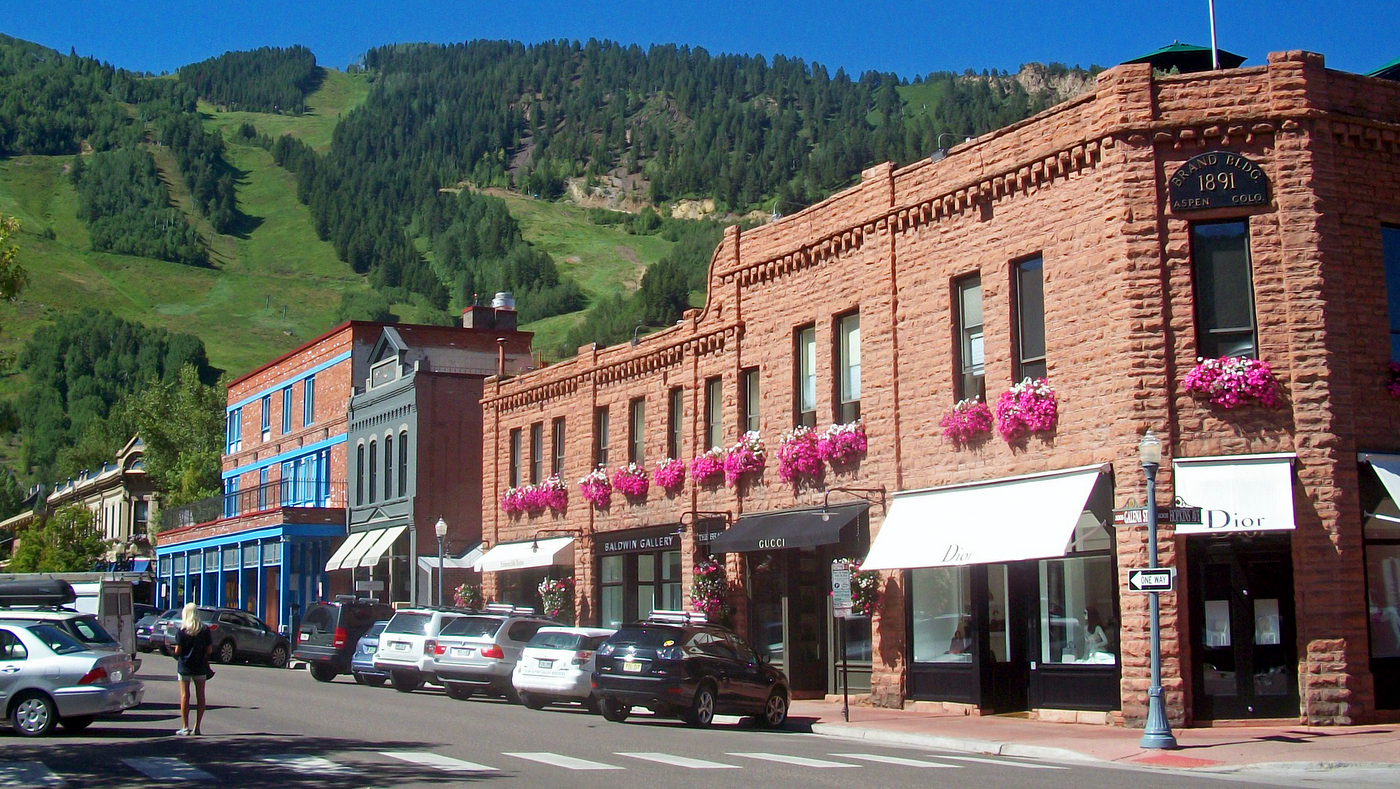 Designer shops line the streets of Aspen, CO.
Designer shops line the streets of Aspen, CO.
ASPEN, Colo. — At first, Loly Garcia didn’t have to travel far to her jobs in the chic hotels of this fabled tourist town. She shared a tiny studio apartment with her father, brother and a cousin after arriving from El Salvador more than 20 years ago.
But after she married and wanted a home of her own, she had to drive 23 miles west, past tracts of empty land and vacant mansions whose owners visit only a couple of weeks a year, to the mobile home park where she now lives.
The drive eventually wore her down, and she decided to take lower-paying work closer to home. “That commute — it becomes 10 hours a week. It’s like working an extra day,” said Garcia, 49. “It’s hard to live here.”
The divide between the haves and have-nots in Aspen reflects a division that cuts across the country: The richest are getting richer while the rest of the population is essentially treading water. From 2009 to 2012, inflation-adjusted income for the wealthiest 1 percent of U.S. households surged 31 percent, according to economist Emmanuel Saez of the University of California, Berkeley. For everyone else, income inched up just 0.4 percent.
In Aspen, that division is magnified because the gap is geographic as well as financial. The people who clean the vacation homes, maintain the mansions’ gardens and work in the hotels must find housing in mobile home parks or subdivisions squeezed into the few acres of developable space dozens of miles to the west. A lucky few — about half of Aspen’s year-round population of 6,700 — are able to score units in the town’s unusual affordable housing program that, on the open market, would sell for millions each.
Meanwhile, residents who struggle to find affordable real estate watch an increasing number of houses in town become rarely inhabited vacation properties.
“It’s a mirror image of Detroit, where wealth, not poverty, is driving population down,” said Mick Ireland, a former three-term Aspen mayor.
Aspen’s dilemma is similar to that of other resort towns, from Nantucket, Massachusetts, to Park City, Utah, especially those nestled in the jagged terrain of the western United States. In the West, vast tracts of public land and sheer mountain faces prevent the easy development of suburbs to house workers, pushing clusters of more affordable housing many miles away. The jobs in these communities are largely in the lower-paying service industry, yet the resort towns are a destination for the global upper class, said Bill Hettinger, author of “Living and Working in Paradise,” a book on resort towns.
Aspen’s median family income of $71,000 is higher than the state average. But the further “down-valley,” or to the west, you drive, the more incomes drop until you hit Glenwood Springs, 51 miles west, where the median family income of $54,000 is below average and carpenters, plumbers and other laborers regularly spend hours commuting to Aspen.
The situation would be worse had Aspen not gone to extraordinary lengths to try to avoid being hollowed out by the departure of middle-class and working-class residents. Financed by a 1.5 percent charge on real estate sales and a mandate that any new projects include affordable housing, the city and county run a 40-year-old program that allows people who have worked for one year or longer in Aspen to rent, or buy, cheap residences.
Doctors and lawyers, as priced out of most homes here as carpenters and bartenders, take advantage of the program. Everyone in town praises the program for maintaining a critical mass of year-round families that give Aspen a more lived-in feel than many of its competitors.
But many in town grumble about inequality. The mordant joke is that the billionaires are pushing out the millionaires. Cheaper eateries frequented by locals are relentlessly replaced by upscale restaurants and high-end shops, and even the Aspen realtor’s association office was pushed out of town because it couldn’t afford to pay the skyrocketing rents in a town where the average property sale is $5 million.
Adam Frisch, 47, an Aspen city councilman, father of two and former banker, said he doesn’t feel the town has changed, just the severity of income inequality nationally, which shows up here in a concentrated form.
Some here say living amid rampant inequality is just the price one pays for residing in what locals sometimes call “Disneyland for adults.”
Elizabeth Milias, a former official in President George W. Bush’s administration who writes a blog critical of Aspen’s political establishment, said she has grown tired of complaints. “There’s that sense that, my God, their lives would have been so much better if they lived in Cleveland,” she said. “Aspen can’t exist without high-end tourists. They signed up for that.”
That’s why Jose Herrera moved to these mountains from Mexico. The 25-year-old construction worker can’t afford the prices in town and lives dozens of miles away in a mobile home park. But he doesn’t resent the wealthy.
“The company where I work builds houses for rich people, and because of that it pays well,” Herrera said. “One way or another, we help each other out.”

